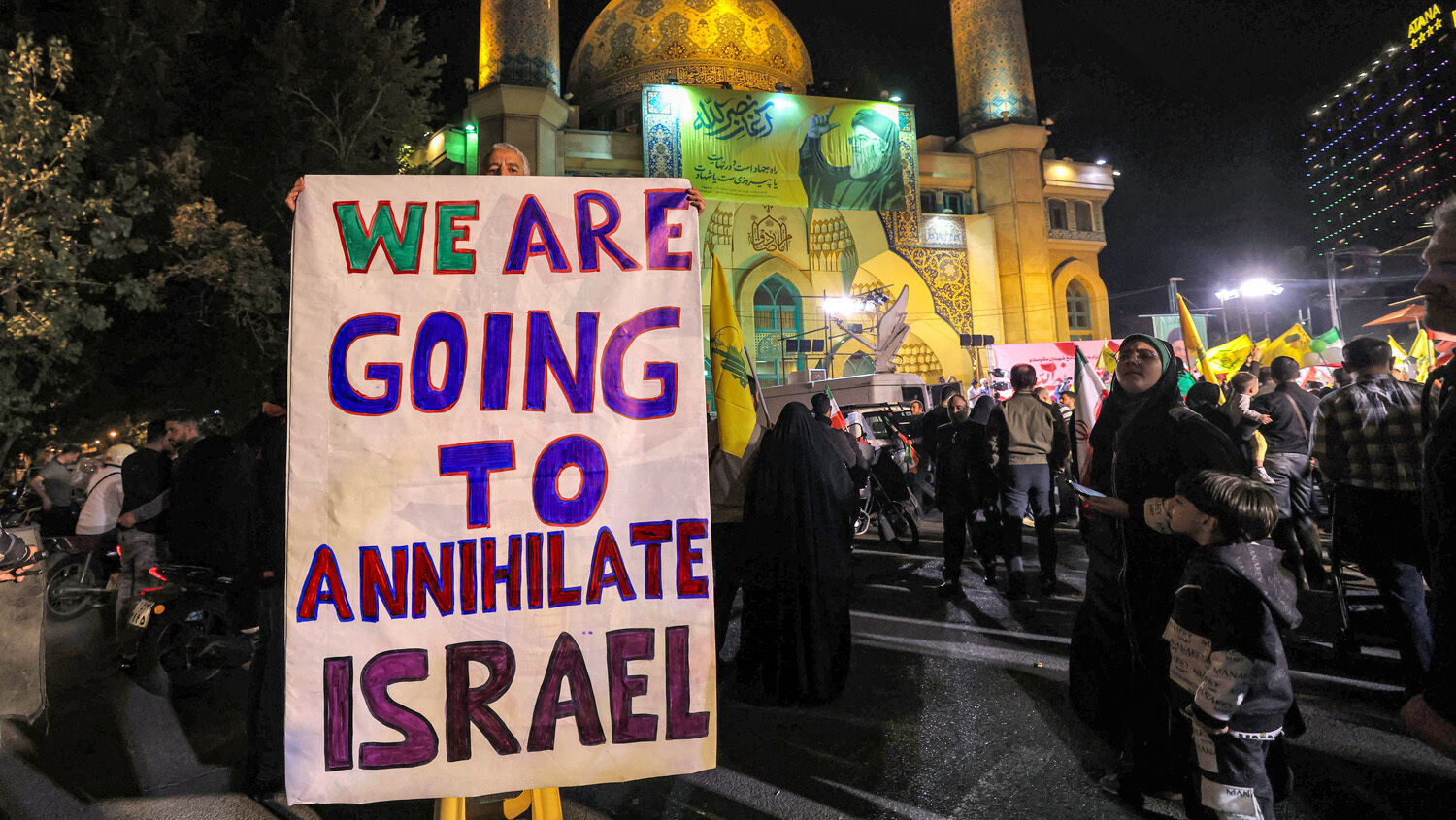
Why Does Iran Hate Israel?
The Islamic Republic of Iran has made the destruction of Israel its animating principle. Iranian clerics call for the annihilation of Israel, Iranian politicians say that “Israel must be wiped off the map,” and Iranian pilgrims chant “Death to Israel” during their Hajj rituals. Just recently, Gen. Ebrahim Jabbari, senior adviser to the Islamic Revolutionary Guard Corps, said, “We must chop off Trump’s hand, slit Netanyahu’s throat, annihilate Israel.”
Most clear-eyed analysts can see that Iran’s irrational obsession with Israel and Palestine is religiously motivated. Still, many are surprised to learn that Supreme Leader Ali Khamenei’s virulent hatred of Israel does not come from Shiite Islam, but from the literature of the Muslim Brotherhood, a militant Sunni organization.
The original split between Sunni and Shiite Islam took place in a.d. 664, after the second caliph of the Islamic Ummah, Umar ibn al-Khattab, was murdered by his Iranian slave. In the aftermath of Umar’s murder, all the electors agreed his successor should come from the Hashemite clan, but some supported Muhammad’s son-in-law, Othman, and some supported Muhammad’s cousin Ali. The succession eventually went to Othman, but the supporters of Ali resented this fact, saying Othman should not rule the caliphate because he was only related to Muhammad by marriage, whereas Ali was related by blood. Those who supported Othman referred to themselves as the “people of the tradition of Muhammad and the consensus of the Ummah” or “Sunnis.”
These supporters of Ali simply referred to themselves as the “faction of Ali” or “Shiites.” After Shiite supporters murdered Othman in a.d. 657, the caliphate erupted into a civil war that split mainstream Islam into two branches—with the Shiites claiming that only direct descendants of Ali had the authority to rule and the Sunnis claiming that any man who embraced the tenants of Sunni Islam could be accepted as a ruler.
The 12th ruler (imam) of the Shiites, however, disappeared without a descendant in a.d. 941, leaving the Shiites without a leader. Thus, it became a central tenet of Shiite Islam that there could be no central religious authority until the 12th imam returned as the Mahdi (a Messiah-like figure) in the end time. The Shiites agreed that their clerics should guide believers on spiritual issues until the return of the Mahdi, but leave temporal issues to whichever sovereign was in power in their nation of residence at the time.
Another notable difference between Sunni and Shiite Islam is that Sunnis believe the Prophet Mohammed’s night journey to the “furthest mosque,” as narrated in the Quran, was made to the al-Aqsa in Jerusalem, while the Shiites believe this journey was made to the mosque of al-Kufah in southern Iraq. This means that the land of Israel and the city of Jerusalem were traditionally less significant to the Shia than to the Sunni.
The Iranian Revolution of 1979 changed everything by blending Shiite Islam with the radical theology of the Muslim Brotherhood. After Ayatollah Ruhollah Khomeini read the writings of Muslim Brotherhood leader Sayyid Qutb, he rejected the idea that no ayatollah could hold political power until the Mahdi’s return and devised a controversial theory of Islamic government in which the state is guided by one cleric acting as the Mahdi’s deputy. Many Shiite clerics, in both Iraq and Iran, opposed Khomeini’s clerical rule, yet his theory allowed him to create a theocratic dictatorship despite not being a direct descendant of Ali.
Khomeini’s successor, Ali Khamenei, has continued ruling Iran as a theocratic dictatorship. In fact, according to Mohsen Kadivar, a prominent Iranian theologian, Sayyid Qutb is Khamenei’s favorite author. So it makes sense that he would be equally influenced by Sunni and Shiite theology. The Muslim Brotherhood teaches that Palestine, particularly the al-Aqsa Mosque, needs to be liberated from the “Zionist entity” by radical jihad. So the Iranian regime also got this belief from them. The al-Aqsa Mosque isn’t that important in traditional Shiite theology, but Khomeini and Khamenei have blended Sunni and Shiite theology in such a way as to make Jerusalem the launching pad for the 12th imam’s conquest of the world.
With these facts in mind, it should be evident that Iran’s ayatollahs will never make peace with Israel. They may agree to a temporary ceasefire to prevent America from bombing their country, but you cannot negotiate with a religious fundamentalist. Iran’s ayatollahs have adopted the Muslim Brotherhood’s radical worldview, so they firmly believe that peace can never come until the whole world is transformed into an Islamic caliphate. Conquering Jerusalem is just the first step in a radical Islamist plan to conquer all nations.
The Muslim Brotherhood and Iran still have some disagreements about the identity of the Mahdi destined to rule the world, but agree that Muslims’ primary weapon against the “Zionist entity” is the unity of the Islamic Ummah. Watch for Iran to make moves toward establishing such an Ummah.
Over the past several months, the Iranians have lost control of Syria. So they are likely to reach out to Muslim Brotherhood cells in Egypt, Libya and elsewhere. Biblical passages such as Daniel 11 foretell that an end-time “king of the south” will gain strong influence over Egypt, Libya and Ethiopia (verses 42-43). The current regime in Iran is espousing a violent ideology that was largely concocted by Muslim Brotherhood ideologies in these regions.
Hatred of the “Zionist entity” is the glue binding radical Sunnis and radical Shiites together.
